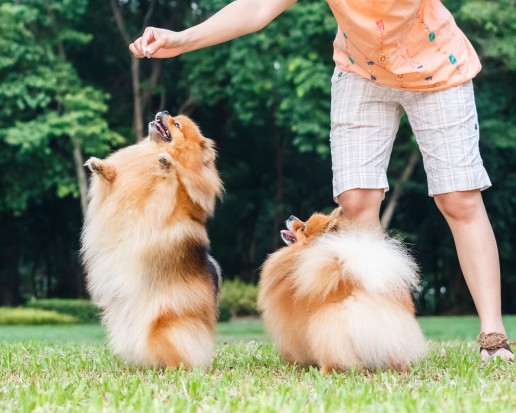
Many pet owners will face the problems associated with dog hip pain at some point in their animal's life. There are several possible causes of the hip pain and we will discuss here the two most common reasons the canine may be experiencing painful joints.
First of all, the most common symptoms of dog hip pain is when they have trouble lying down or rising from a sitting or prone position. You may observe them making this maneuver very slowly and sometime grunting or groaning when doing so. Another common observation is seeing them having much difficulty negotiating steps or stairs or issues with jumping up onto beds or furniture as they had previously easily done.
If the painful hips in your dog begin showing symptoms when the dog is younger, it is possible he or she may have hip dysplasia. Your vet will request x-rays to be done to confirm this problem. This hip problem is a genetic disease passed down from the dog's parents. It most definitely has higher frequencies in some breeds than others. The x-ray will confirm the joint problem. If it is confirmed, the only real cure for the dysplasia is surgery to repair the joint. The problem is that the ball is not fitting correctly in the socket. This causes the animal pain. It is important to take your younger dog to the vet as soon as possible for a diagnosis once persistent symptoms are observed.
The other common reason for dog hip pain is simply the common form of arthritis called canine osteoarthritis. This joint disease usually begins occurring later in the dog's life and is very common. In fact, most dogs (and humans) will at some point in their life experience arthritis to some extent. Some breeds, especially the larger dogs, may suffer from dog hip pain more severely than smaller dogs. The reason for this is that the larger dogs carry more weight and thus have more stress on their joints.
Common arthritis is a degenerative disease and will only progress in severity over time. There are no cures for canine arthritis. However, there are things that pet owners can do to minimize the severity of the symptoms (which are very similar to dogs with hip dysplasia).
Probably the most important thing you can do for your pet suffering from osteoarthritis is to make sure he or she is not over weight at all. Carrying a few extra pounds of unneeded weight will add more stress and strain to the hip and other joints. As with people, it may be difficult to get the senior dog to lose weight. Since they are less active usually, the pounds will not come off easily. You must simply lower their daily intake of food until you see them losing weight. It is very important to measure out their food so you know exactly how much they are getting each day.
Additionally, the veterinarian may suggest starting the dog on a prescription medication or natural supplementation. We suggest first trying a natural supplement called glucosamine. Ask your vet about this. However, from our experience, we have seen many older dogs experience significant relief from liquid glucosamine. Plus, it is inexpensive and completely safe with no side effects when treating dog hip pain in older canines.
Visit our online store for more info about using Synflex for treating the damaging effects of dog arthitis without risk of side effects.
 Some More Information About The Bolognese Dog Breed
Some More Informa
Some More Information About The Bolognese Dog Breed
Some More Informa
 Considerations Regarding Ferret Surgery For Carcinomas And Other Issues
Considerations Re
Considerations Regarding Ferret Surgery For Carcinomas And Other Issues
Considerations Re
 Training Your Dog Not To Beg Or Take Food From Other People
Training Your Dog
Training Your Dog Not To Beg Or Take Food From Other People
Training Your Dog
 Is The Bavarian Mountain Hound A Good Choice Of Pet?
Is The Bavarian M
Is The Bavarian Mountain Hound A Good Choice Of Pet?
Is The Bavarian M
 How To Care For A Cat Suffering With Arthritis
How To Care For A
How To Care For A Cat Suffering With Arthritis
How To Care For A
Copyright © 2005-2016 Pet Information All Rights Reserved
Contact us: www162date@outlook.com